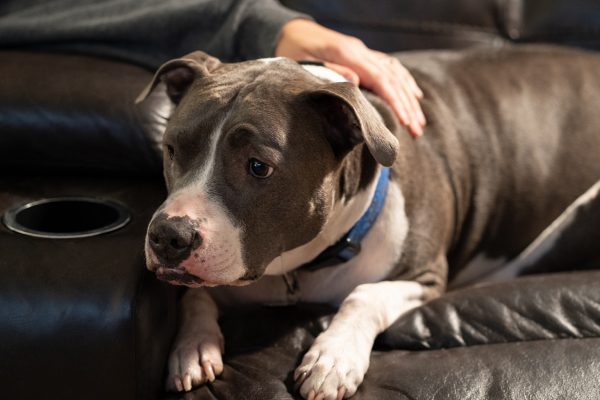Home>Health & Wellness>Common Health Issues>Neurological Health>Navigating the Twists and Turns of Old Dog Vestibular Disease


Neurological Health
Navigating the Twists and Turns of Old Dog Vestibular Disease
Published: November 22, 2023
Learn about the symptoms of old dog vestibular disease and how to best care for your senior canine companion. Find out what you can do to ensure your beloved pup has a comfortable and enjoyable golden years.
(Many of the links in this article redirect to a specific reviewed product. Your purchase of these products through affiliate links helps to generate commission for Pawsomeoldies.com, at no extra cost. Learn more)
As our beloved dogs age, they may encounter various health issues, one of which is old dog vestibular disease. This condition, often startling to pet owners, can significantly impact an older dog’s quality of life. Understanding this disease, its symptoms, and how to manage it is crucial for any responsible dog owner. Let’s explore this condition and how best to support our canine companions in their senior years.
What is Old Dog Vestibular Disease?
Old dog vestibular disease is a sudden, non-progressive disturbance of balance, more common in older dogs. It’s also known as idiopathic vestibular syndrome and can be quite alarming due to its sudden onset.
Recognizing the Symptoms: Key Indicators of Vestibular Disease
Being aware of the symptoms is vital for early intervention and management.
- Head Tilt: One of the most noticeable signs, where the dog’s head tilts to one side.
- Loss of Balance: Affected dogs may stumble, fall, or lean to one side.
- Nystagmus: Rapid, involuntary eye movement.
- Nausea and Vomiting: Due to the disorientation and dizziness.
- Reluctance to Stand or Walk: Dogs may appear disoriented or anxious about moving.
Managing Vestibular Disease: Providing Comfort and Care
While there’s no specific cure, there are ways to manage the condition and support your dog.
- Veterinary Assessment: A thorough examination to rule out other causes is essential.
- Supportive Care: Helping your dog with movement and ensuring they’re comfortable.
- Medication: In some cases, medications for nausea or motion sickness can be prescribed.
- Patience and Love: Recovery can take time, and your support is crucial for your dog’s well-being.
Paws of Reassurance: Embracing the Journey with Your Senior Dog
Dealing with old dog vestibular disease can be challenging, but with the right approach, you can help your furry friend navigate this phase of their life with comfort and dignity.
Frequently Asked Questions
- How long does old dog vestibular disease last?
- Symptoms usually improve within 72 hours, with most dogs recovering within two to three weeks.
- Can vestibular disease be prevented?
- As it’s often idiopathic (without a known cause), prevention is not straightforward. Regular health check-ups are important.
- Is vestibular disease in dogs painful?
- The disease itself is not painful, but it can cause discomfort due to nausea and disorientation.
- What should I do if my dog shows symptoms of vestibular disease?
- Consult your veterinarian immediately for a proper diagnosis and treatment plan.
- Can young dogs get vestibular disease?
- While more common in older dogs, it can occur at any age.















